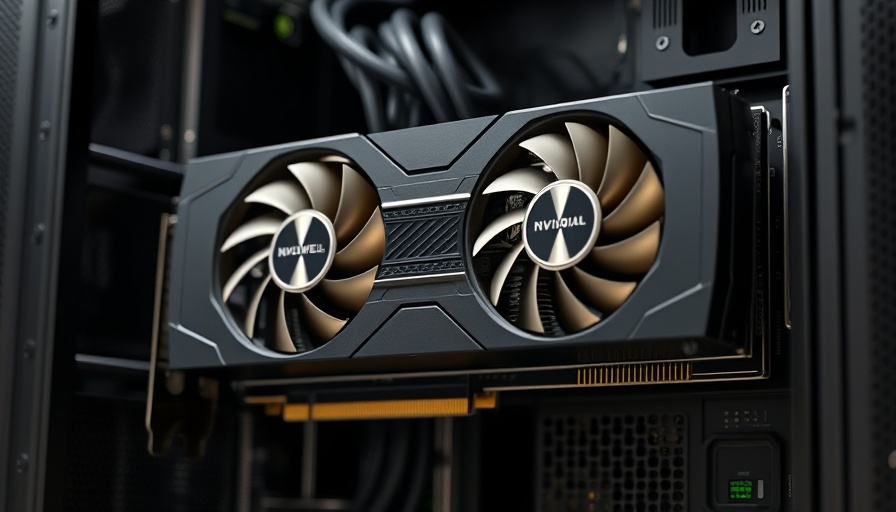
Unveiling NVIDIA's Latest Tech Triumph: Blackwell GPU
NVIDIA has officially unveiled its latest innovation, the RTX PRO 6000 Blackwell Server Edition GPU, set to redefine the standards for enterprise servers. Slated for deployment in a variety of configurations from major providers like Cisco, Dell Technologies, and HPE, these cutting-edge systems promise to enhance performance and efficiency across multiple applications, including AI model training, content creation, and in-depth scientific research.
According to NVIDIA's founder and CEO, Jensen Huang, this leap forward marks a pivotal moment in computing, highlighting how AI is reinventing the architectural landscape of on-premises data centers. By ensuring that NVIDIA Blackwell RTX PRO Servers become the industry norm for enterprise and industrial AI, NVIDIA aims to transform the way organizations leverage AI to optimize operations.
GPU Acceleration Transforms Business Operations
Millions of servers are sold annually for organizational uses, yet many still rely on traditional CPU architectures. NVIDIA's latest RTX PRO Servers aim to challenge this trend by incorporating GPU acceleration, dramatically improving performance metrics related to analytics, simulations, video processing, and rendering tasks. The company asserts that these new servers can outperform CPU-only systems by up to 45 times and achieve energy efficiency rates 18 times higher than conventional setups.
This initiative targets businesses intending to establish “AI factories,” where critical resources such as space, power, and cooling come at a premium. These new systems not only promise unmatched performance but also form the backbone for NVIDIA’s AI Data Platform, enhancing various storage ecosystem capabilities.
Key Features of the Blackwell Architecture
Built around NVIDIA's state-of-the-art Blackwell architecture, these servers showcase enhanced technical capabilities designed to meet the demands of modern applications:
- Fifth-Generation Tensor Cores: Ensuring advanced computation capabilities for intense AI workloads.
- Second-Generation Transformer Engine: Achieves inference performance up to six times quicker than the L40S GPU.
- Fourth-Generation RTX Technology: Provides unparalleled photo rendering capabilities, performing four times better than previous models.
- NVIDIA Multi-Instance GPU Technology: Facilitates virtualization, allowing four separate workloads to operate simultaneously on each GPU.
- Improved Energy Efficiency: Designed to minimize power consumption, making it an eco-friendlier option for data centers.
NVIDIA's Role in AI and Robotics Development
NVIDIA's innovations extend beyond server technology, influencing advancements in AI and robotics. The company’s Omniverse libraries and Cosmos software development kit bolster its stance in the AI ecosystem, providing tools and resources essential for creating sophisticated virtual environments. These elements are crucial for organizations tasked with developing advanced robotic systems that require seamless integration with AI capabilities.
Future Opportunities in AI and Data Center Technologies
The integration of NVIDIA's Blackwell architecture into mainstream enterprise applications heralds a new era where AI and data center technologies converge. Organizations that adapt to these advancements stand to gain significantly in operational efficiency, potentially realizing improvements that can scale their infrastructure effectively.
The impact on sectors such as healthcare, automotive, and finance — where large data sets and high processing capabilities are imperative — cannot be overstated. As businesses contend with increasing data demands, AI-driven servers like the Blackwell-powered solutions will position them to meet challenges head-on while achieving substantial cost savings in the long run.
Embracing Change: The Road Ahead for Businesses
In today's fast-evolving technological landscape, staying ahead means understanding and embracing emerging technologies. Businesses are encouraged to explore how NVIDIA's servers, bolstered by the Blackwell architecture, can transform their operations. By investing in GPU acceleration and AI capabilities, organizations will not only streamline their processes but also integrate innovative solutions that keep them relevant in a competitive landscape.
The growing reliance on cloud infrastructures paired with these advancements suggests that the future will see more seamless integration of physical and digital realms, shaping industries in ways previously thought unattainable.
To explore how NVIDIA’s latest technologies can impact your business, delve deeper into the capabilities and possibilities offered by the Blackwell GPU and consider integrating these solutions into your operations.
 Add Row
Add Row  Add
Add 




Write A Comment